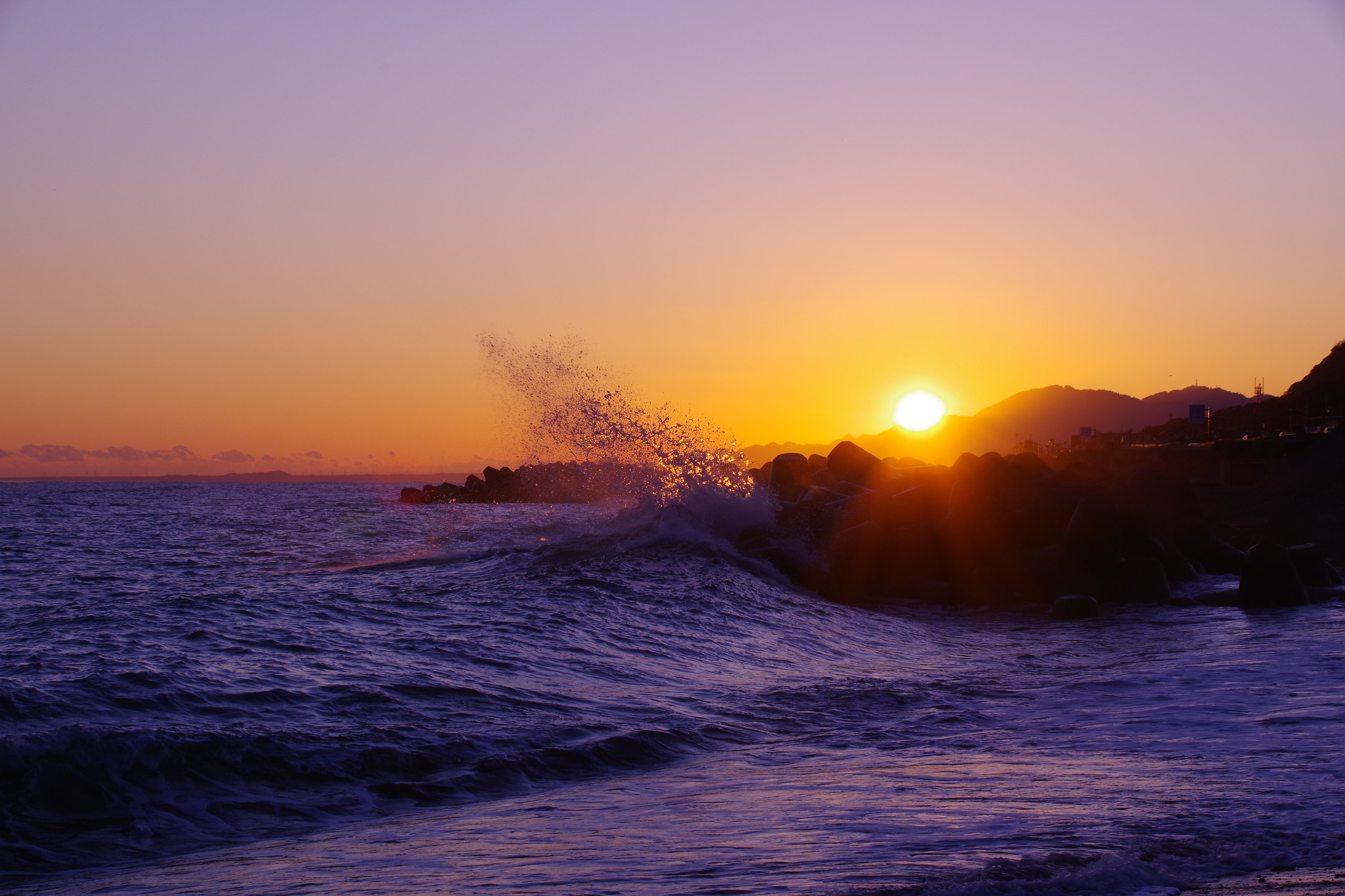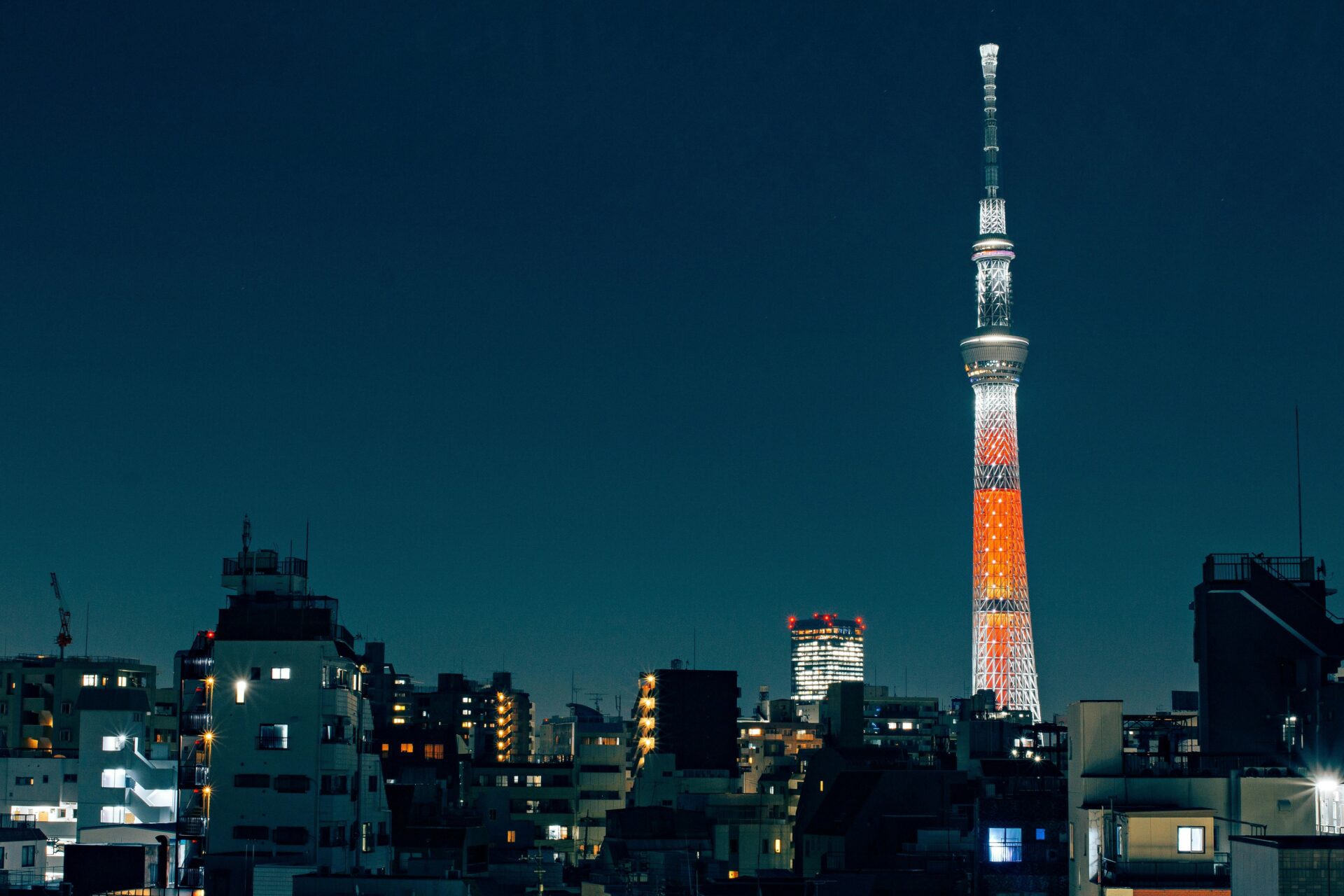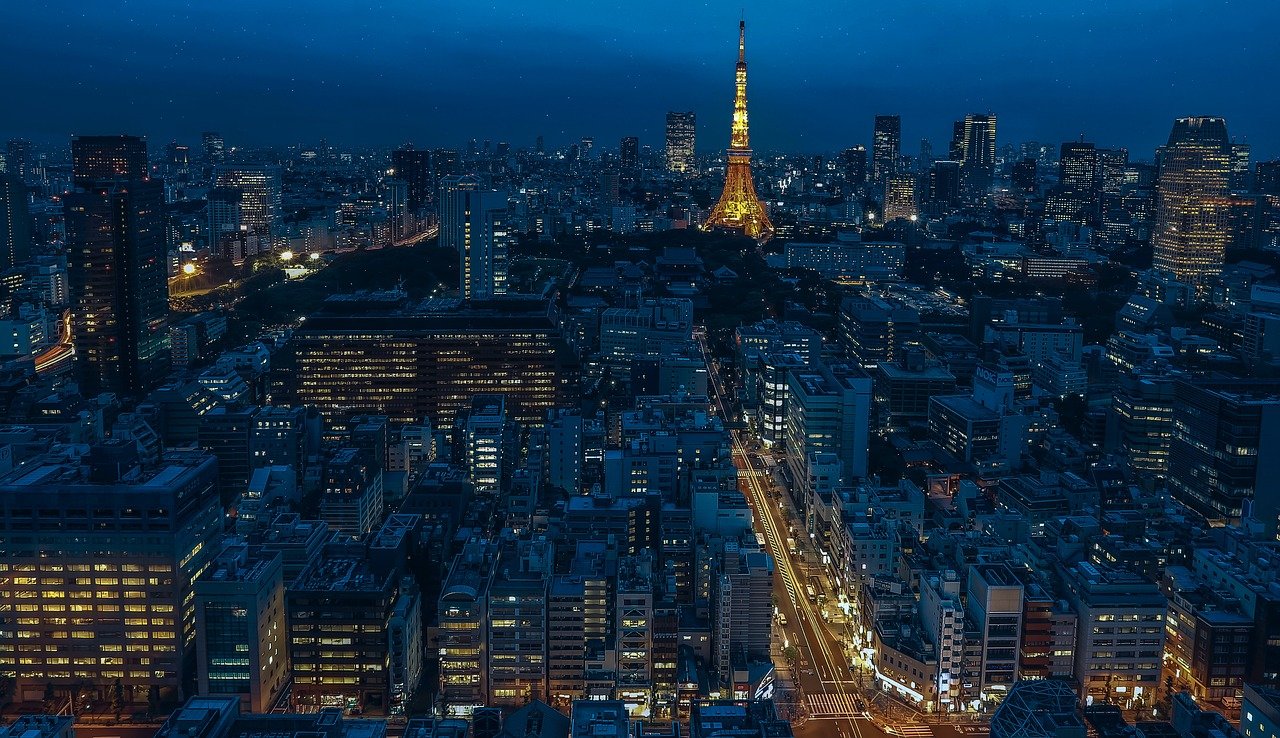No matter where you are in the world, New Year is a special time for everyone to celebrate the arrival of the new year full of opportunities. In Japan, New Year (正月, shōgatsu) is the most important holiday, but the celebrations are generally quite different from the typical Western celebrations. So-called bonenkai (year-forgetting-parties) are organized with the goals of leaving the worries of the past year behind and starting the new year fresh. Many shops and companies close for the first few days of January and people use this time to spend time with their family. Many people go back to their hometown to spend the New Year’s holiday with their family or local friends. People from different cultures or countries celebrate the end of the year in different ways and Japanese culture also has unique traditions. Here is the ultimate guide for how to spend New Year’s holidays in Japan!
- New Year’s Greeting
- Kadomatsu (門松) and Shimekazari (注連飾り)
- Toshikoshi Soba (年越しそば)
- Osechi (おせち)
- Joya no Kane (除夜の鐘)
- Hatsuhinode (初日の出)
- Hatsuyume (初夢)
- Hatsumode (初詣)
- Nengajo (年賀状)
- Otoshidama (お年玉)
- Lucky Bag/ Fukubukuro (福袋)
- Traditional New Year’s Game (お正月遊び)
- Shishimai (獅子舞)
- Kakizome the First Writing of the Year (書初め)
- Japan Wonder Travel Tours
- Other articles you may like
New Year’s Greeting
Where in Western countries you often say “Happy New Year” or “Happy Holidays” at the end of the year and the arrival of the new year, a distinction is made in Japanese between wishing someone a happy end of the year and a happy arrival of the new year. You will hear several expressions used for wishing someone a happy new year, but two are the most used:
良いお年を迎えください ~ yoi otoshi o (mukaete kudasai)
明けましておめでとう (ございます) ~ akemashite omedeto (gozaimasu)
“Yoi otoshi o” is used at the end of the year as the meaning is to have a good year and greet the new year. mukaete kudasai is often omitted. “Akemashite omedeto (gozaimasu)” is a greeting you’ll hear after the new year has arrived. A way to remember: think of the fact that you want to congratulate your friends with the arrival of the new year as omedeto means congratulations. You might also add “Kotoshi mo yoroshiku” to this phrase, meaning generally “and this year as well, please.” A quirky, informal way to shorten this rather long phrase is “ake ome koto yoro!” Say it to your friends and maybe they will smile!
Kadomatsu (門松) and Shimekazari (注連飾り)
Kadomatsu and shimekazari are traditional Japanese ornaments that you can spot everywhere. They are placed in pairs in front of houses, shops, hotels and others to welcome Toshigami-sama, a deity of harvest and ancestral spirits. Also it’s believed to ward off evil spirits.
Kadomatsu, gate pine, consists of three bamboo shoots of different lengths (symbolizing prosperity), pine (symbolizing longevity), and plum branches (symbolizing steadfastness).
Shimekazari are straw-rope ornaments hung above the doors and entrance to welcome the gods of good fortune and scare away evil spirits. They consist of several elements that each have their own specific meaning and origins in old, traditional beliefs, including a shimenawa (a sacred rice straw rope that you can also see at shrines), pine, bitter orange and other good luck charms.
Both ornaments are hung up typically between December 26-28, taken down on January 7 and burned on January 15.
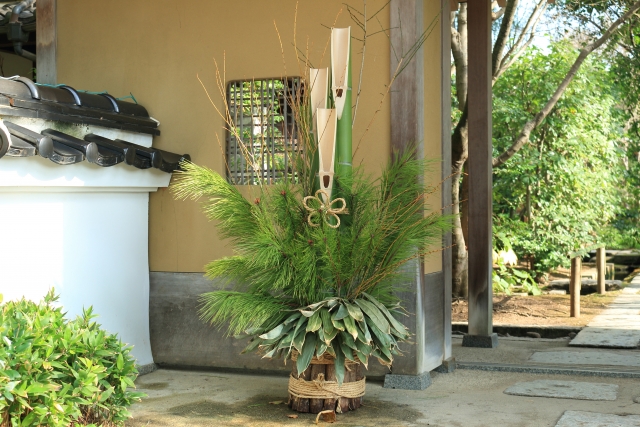
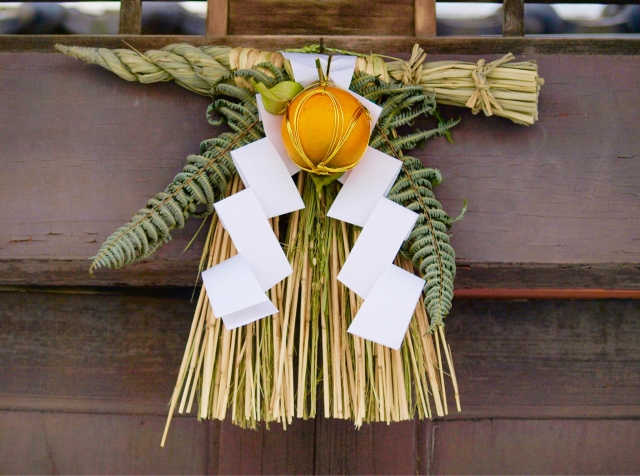
Toshikoshi Soba (年越しそば)
Soba (そば) is a traditional Japanese noodle which is also known as buckwheat noodles in other countries. Many people enjoy the mild taste of soba, the dish is especially popular among the elderly. It is also an upcoming healthy food which contains a wide variety of nutrients with low calories.
Japanese people love to eat Soba on New Year’s Eve. It is called Toshikoshi Soba, which means eating soba as you welcome the new year. This custom dates back to the Edo period when people started to eat soba when they usher in the new year. Soba noodles symbolize a long life, and the soft noodles that are easy to chew, help you get rid of bad luck in the previous year so that it won’t haunt you for the next year!
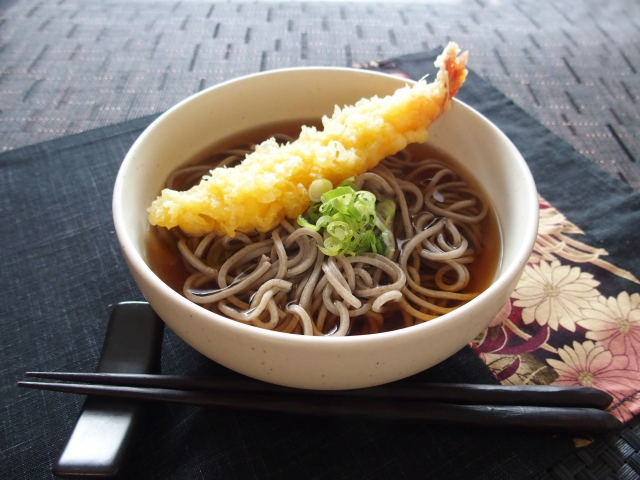
Osechi (おせち)
Osechi is a special cuisine that you can enjoy only during the New Year’s holiday in Japan. It consists of traditional Japanese dishes like shrimp and datemaki. They are all packed in a jubako, a traditional lacquer box which looks like a lunch box. Japanese people enjoy sharing it with their families or relatives and each dish is generally served in a small portion so that you can enjoy all of the different ones. This is important as each part has a different meaning, some popular Osechi ingredients are:
- Ebi – Shrimp: Wishing for longevity
- Datemaki – Rolled sweet omelet: Wish to improve knowledge
- Kazunoko – Herring roe: Pray for the prosperity of descendants
- Kuromame – Sweet black beans: Encourage work and academic achievement
- Kuri-kinton – Sweet mashed potato with chestnuts: Money, luck
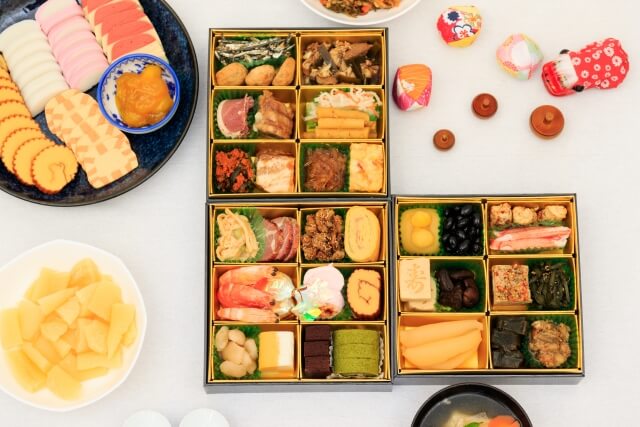
Joya no Kane (除夜の鐘)
Joya no Kane is a traditional event that is carried out at some Buddhist temples around Japan. They ring a giant bell (usually hung outside) 108 times in total. This number represents the number of worldly desires of humans. Some temples start to ring the bell before New Year, whereas others wait until the clock points 12 am sharp. Many people enjoy watching the annual event in person and come to the temple at night. You can also enjoy the event on TV which allows you to feel the sacred atmosphere without going out in the freezing cold weather.

Hatsuhinode (初日の出)
The first day of the new year is best started by viewing the new year’s first sunrise, hatsuhinode and many people stay up to do so. Some observatories open for this tradition, but as these are often very popular, it is difficult to get one of the limited tickets. Other people prefer to go hiking and watch the sunrise from the top of the mountain. Some people also enjoy going to the beach!
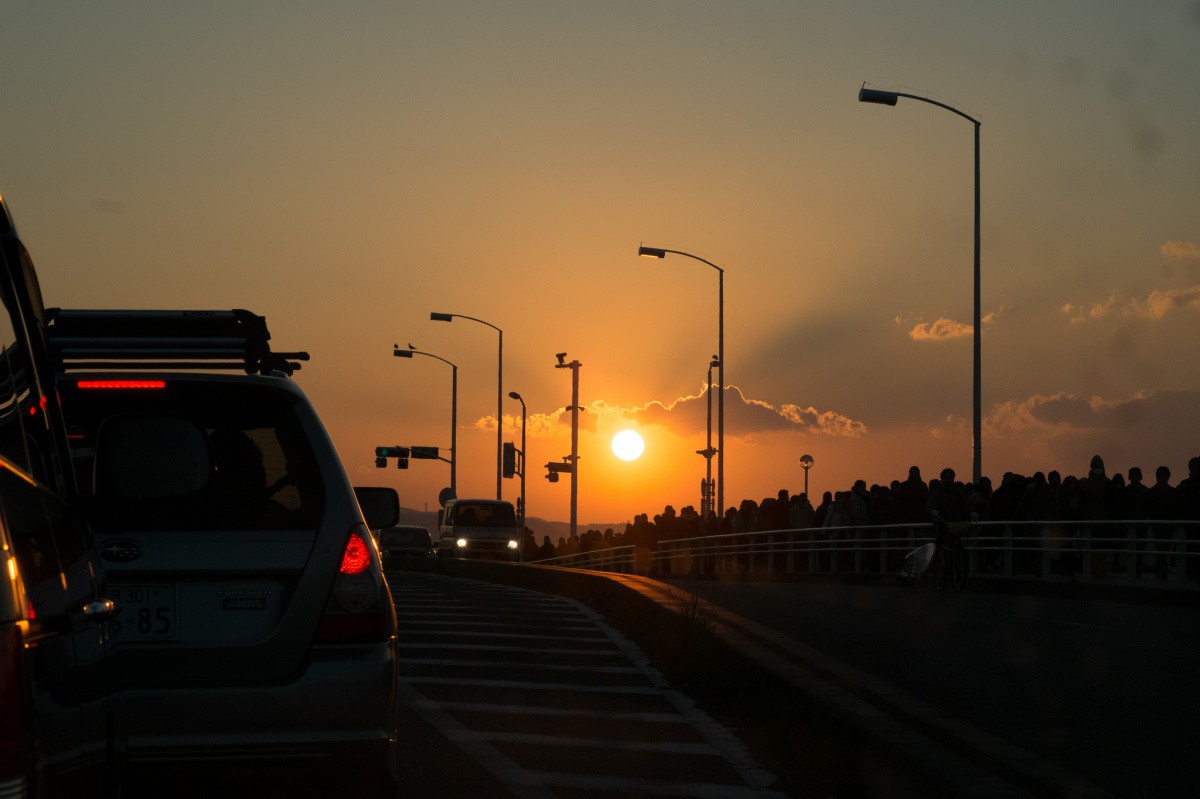
Hatsuyume (初夢)
Hatsuyume literally means the first dream that you have in the year. In Japan, it is considered as a special dream that predicts your fortune for the coming year. There are some things that are believed to bring you happiness if they appear in your first dream:
- Fuji (富士)
- Hawk (鷹, たか)
- Eggplant (茄子, ナス)
This belief dates back to the Edo period, but the reason for these three things is unknown. According to one of the famous theories, these items were strongly associated with the Tokugawa family which governed the country during the Edo period. Other theories claim the combination of these three things is lucky because Fuji is the highest mountain, a hawk is a clever bird and the word for eggplant is pronounced the same as the word for luck: nasu.

Hatsumode (初詣)
Hatsumode is one of the most important events during the New Year’s holiday in Japan. It is your first shrine/ temple visit of the new year to make a wish and pray for the good fortune of the year. There is no specific rule or date which stipulates when to visit shrines or temples, but typically it is done between January 1-3. Some people choose New Year’s Day, while others wait a couple of days to avoid the large crowds. Popular hatsumode locations throughout Japan are Meiji Shrine in Tokyo, Fushimi Inari Taisha in Kyoto, Sumiyoshi Taisha, Osaka, and Tsurugaoka Hachimangu in Kanagawa.

Nengajo (年賀状)
Nengajo has been popular for many years, but these days the popularity is on its return as not many people send letters and postcards to friends or family anymore. Nengajo is a New Year’s greeting card, which is delivered specially on January 1st. Many shops will still sell nengajo with the utmost beautiful and cute designs.
And if you receive one, check the 6 digit number at the bottom of the card. It’s your lottery number and you can check the result usually in the middle of January. The highest prize is 300,000 yen but It’s only one in a million possibility. If you win the lottery, you can exchange it at the post office. It’s only valid for 6 months, so don’t forget to check the number and test your luck!

Otoshidama (お年玉)
Otoshidama is something that Japanese children are most excited about: it is the traditional custom that adults give out some money to their children or relative’s children in a small envelope called pochi bukuro. It is considered as a gift of cash that children receive as a celebration of the new year. It also meant to give children some awareness about money by thinking how to spend the money.

Lucky Bag/ Fukubukuro (福袋)
New Year is a perfect time to go shopping in Japan as many shops hold big sales. You will see many shops selling lucky bags. Lucky bags, fukubukuro in Japanese, are special bags that are packed with various kinds of products and items. It can be found at any kind of shop including clothing, cosmetics, and even grocery stores. You can’t check inside the bags until you finally open it, but it usually includes popular items or some limited editions especially made for Fukubukuro. The bags are often great value for money, sometimes you will receive products with a value twice the amount you spent. They are hugely popular in Japan and some shops have a reservation system that allows you to get Fukubukuro without waiting hours in a long line.
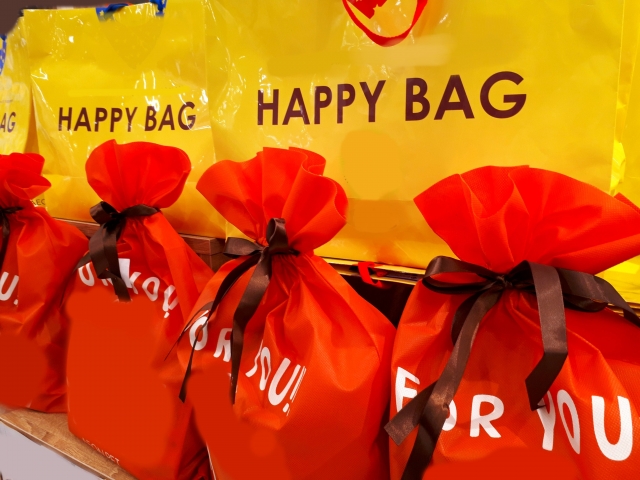
Traditional New Year’s Game (お正月遊び)
It’s common for Japanese to stay at home and enjoy a relaxing time with their family on New Year’s Day, and for a family gathering, playing traditional New Year’s games is essential!
Japanese traditional games for New Year’s have the meaning of bringing happiness and luck. Most of them are simple and easy so that small children can enjoy too, so if you spend your New Year’s in Japan, why not try the traditional games with your family or friends this year?
Fukuwarai
Fukuwarai, literally meaning happy laugh, is a simple game that makes you laugh on the first day of the new year. Draw the faceline on the paper (often it’s Okame, the round face lady) and a player puts on the blindfold then tries to put the facial parts on the right place. The person who made the funniest face as a result wins the game!
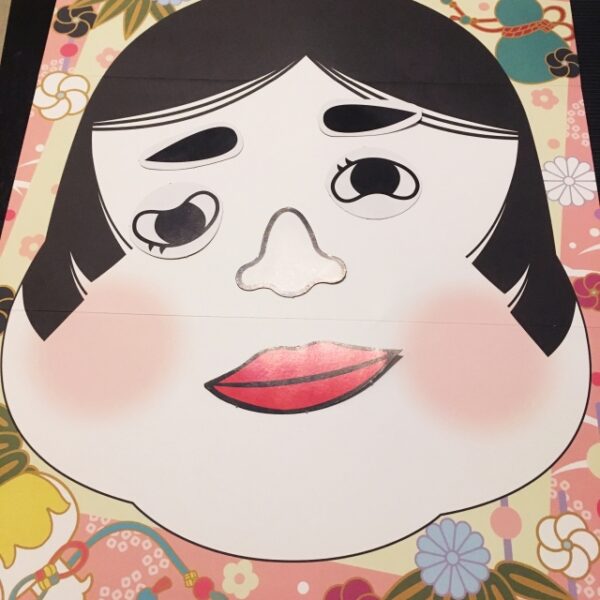
Hanetsuki
Hanetsuki is similar to badminton but using a wooden paddle without a net. Originally it has a meaning of warding off evil spirits and praying for good health for girls. With two people, they tried to keep the rally going and when it failed, the person who dropped the shuttlecock got a mark on the face as a penalty drawn by calligraphy ink.
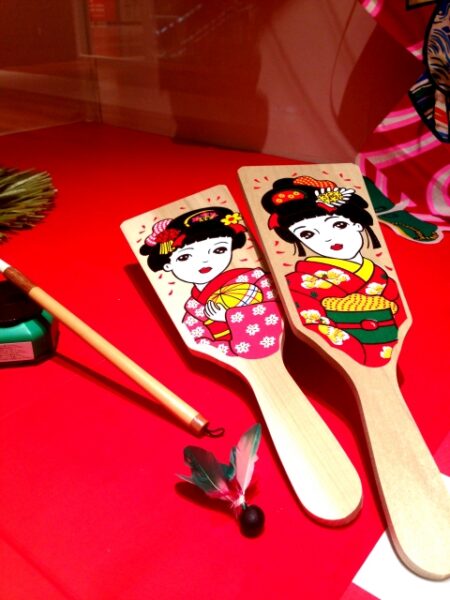
Karuta
Karuta is a card game often played on New Year’s holidays. There are two sets of cards that are matched, reading card and grabbing card, and players try to pick the card corresponding to a reading card while a reader chants the phrase. There are some different kinds of karuta, but the most popular one is Hyakunin-Isshu, 100 poems selected from the 8th to the 13th century written on the card. A reader chants the first part of the poem and players compete to get the corresponding card first that the second part written. Players have to remember the poems so it’s relatively difficult at first.
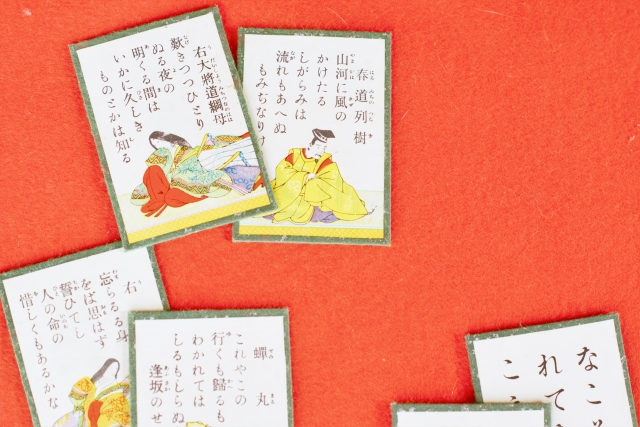
Takoage
Takoage means flying a kite in Japanese. Traditional kite is a Ukiyo-e design and it is said that people prayed for good health. It didn’t start as a New Year’s tradition at first, but when it became too popular in the Edo period, the government only allowed people to play takoage on New Year’s Day. Since then, it has become a typical event of the New Years.
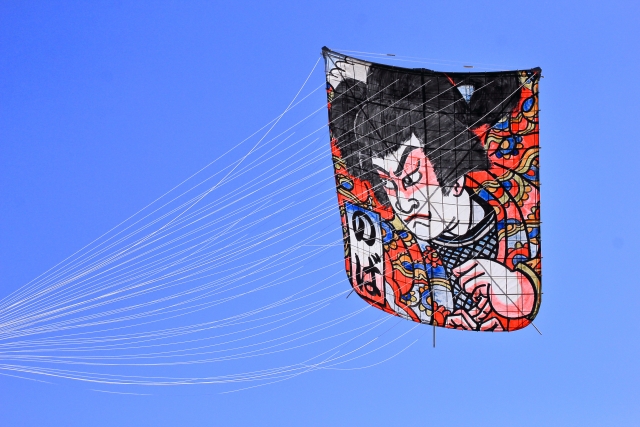
Shishimai (獅子舞)
Shishimai, which can be translated as Lion Dance, is a traditional performance played on New Year’s Day and other celebrations in Japan. It’s a traditional dance from East and Southeast Asia and was imported to Japan from China around the 8th century.
This performance will invite happiness and luck to you and it is said when shishimai bites your head, it will bring you good health for the new year.

Kakizome the First Writing of the Year (書初め)
Kakizome means the first writing in Japanese. It’s typical to write New Year’s resolutions or positive words in calligraphy on New Year’s Day. For children in Japan, it’s common to have kakizome as homework for winter breaks. Usually it is practiced on January 2nd, it is said if you do kakizome on that day, your skill will improve quickly.
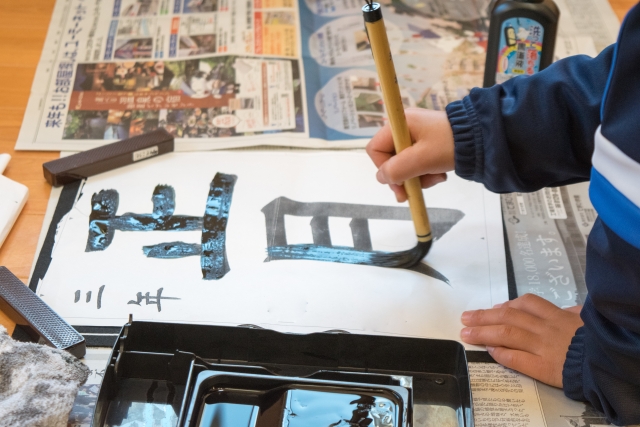
Japan Wonder Travel Tours
Japan Wonder Travel is a travel agency that offers guided tours throughout Japan.
From private walking tours to delicious Food and Drink tours, we can help you organize the best tours just for you! If you want to explore Japan and learn more about the history and backstories of each area you are visiting, our knowledgeable and friendly English speaking guides will happily take you to the best spots!
In addition, we can provide you with any assistance you may need for your upcoming trip to Japan, so please feel free to contact us if you have any questions or need some help!
▶Tokyo Tsukiji Fish Market Food and Drink Tour
Explore the most lively and popular fish market in Tokyo and try some of the local’s favorite street foods and sake with one of our friendly and knowledgeable English speaking guides!

▶Tokyo 1–Day Highlights Private Walking Tour (8 Hours)
There’s no better way to explore an area than taking a tour with a knowledgeable local guide. You will have the chance to learn about the history and interesting background stories of Tokyo, as well as discover some hidden gems which can be hard to do without a guide.

▶Mt. Fuji Day Trip Bus Tour from Tokyo
Experience the breathtaking views of Mt. Fuji by visiting the highlights of the area on our guided sightseeing bus tour! Departing from Shinjuku in central Tokyo, you can travel comfortably to all of the best spots in the area by bus.

▶Kyoto Private Full Day Walking Tour
On this full-day private tour of Kyoto, you will be able to see the highlights of Kyoto in just one day and at the same time develop a deeper understanding of both the culture of the area and Japan as a whole.

Follow us on Instagram or Facebook for more travel inspiration. Or tag us to get featured!
Happy travelling!
Subscribe to our newsletter!
